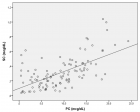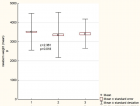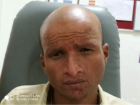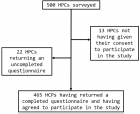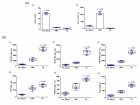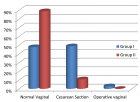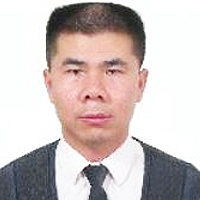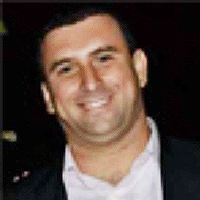Abstract
Research Article
Clinical significance of Vibration Anesthesia on reducing pain of Ring-Block (Subcutaneous Injections) in the patients undergoing Hair Restoration Surgery
Muhammad Ahmad* and Mohammad Humayun Mohmand
Published: 18 October, 2017 | Volume 1 - Issue 1 | Pages: 001-005
Pain is a complex phenomenon which is unpleasant. Different cosmetic procedures are associated with varying degrees of pain. Various modalities are adopted to decrease the severity of pain. The commonly used is the administration of analgesics (opioid or non-steroidal). The pain is carried to the brain by pain fibres. There are various theories about the pain [1,2]. Many attempts have been undertaken to find the modalities which decrease the perception of pain by the brain. The famous ‘gate theory’ was proposed in 1965 by Melzack et al. [3]. It was proposed that the pain experience can be reduced by the activation of nerve fibres that conduct non-toxic stimuli. The theory suggested that the stimulation of larger diameter fibres (A-beta) can close a neural ‘gate’ to nocioceptive signals and can reduce the perception of the pain. The ‘gate’ is proposed to lie within the spinal cord/brainstem and inhibits the transmission of nocioceptive action potentials to higher centres in the central nervous system [4]. The “post-synaptic inhibitory and fascilitatory mechanism” provide a basis for explaining the pain reducing strategies such as rubbing the painful area or applying cold or vibration to decrease the perception of the pain. Various topical irritants used in a few ‘magic’ creams also work on the same principle.
Every effort is made to decrease the perception of pain in cosmetic surgery procedures especially hair restoration. A surgeon who can perform a hair restoration without pain has an edge over his competitors. The potential patients undergoing hair restoration are very anxious about the pain level to be perceived during the procedure. Vibration anaesthesia is becoming increasing used in hair restoration to decrease pain perception. Various recent studies have demonstrated the effective use if vibrations to decrease the pain of local anaesthesia injections [5,7]. The pain of the injection has basically two components; the first is the actual needle prick and second is the discomfort felt due to the tissue stretch by the local anaesthetic drugs [8].
The following study was conducted to compare the pain level of ring block in the patients undergoing hair restoration with and without the use of vibration
Read Full Article HTML DOI: 10.29328/journal.adr.1001001 Cite this Article Read Full Article PDF
References
- Dubner R, Sesele BJ, Storey AT. The neural basis of oral and facial function. New York: Plenum. 1978. 1979; 75: 695. Ref: https://goo.gl/JK63qN
- Moayedi M, Davis KD. Theories of pain from specificity to gate control. J Neurophysiol. 2013; 109: 5-12. Ref: https://goo.gl/ZrRAQP
- Melzack R, Wall PD. Pain mechanisms: a new theory. Science. 1965; 150: 971-979. Ref: https://goo.gl/vbeHwh
- Nanitsos E, Vartuli R, Forte A, Dennison PJ, Peck CC. The effect of vibration on pain during local anaesthesia injections. Aust Dent J. 2009; 54: 94-100. Ref: https://goo.gl/Gr5gF9
- Shahidi Bonjar AH. Syringe micro vibrator (SMV) a new device deing introduced in dentistry to alleviate pain and anxiety of intraoral injections and a comparative study with a similar device. Ann Surg Innov Res. 2011; 5: 1. Ref: https://goo.gl/sNxbgB
- Nasehi A, Bhardwaj S, Kamath AT, Gadicherla S, Pentapati KC. Clinical pain evaluation with introral vibration device during local anaesthetic injections. J Clin Exp Dent. 2015; 7: 23-27. Ref: https://goo.gl/7E8qSt
- Sharma P, Czyz CN, Wulc AE. Investigating the efficacy of vibration anaesthesia to reduce pain from cosmetic Botulinum toxin injections. Aesthet Surg J. 2011; 31: 966-971. Ref: https://goo.gl/tbjToJ
- Ahmad M, Mohmand MH. Use of vibration anaesthesia in hair restoration surgery. J Pak Assoc Dermatol. 2017; 27.
- : https://goo.gl/lg5y3n .
- Johansson RS, Landstrom U, Lundstrom R. Responses of mechanoreceptive afferent units in the glabrous skin of the human hand to sinusoidal skin displacements. Brain Res. 1982; 244: 17-25. Ref: https://goo.gl/yCFH2A
- Hasan Z, Houk AC. Analysis of response properties of deeferented mammalian spindle receptors based on frequency response. J Nerophysiol. 1975; 38: 663-672. Ref: https://goo.gl/w537Un
- Kohn T, Zari S. Local anaesthesia techniques in hair restoration surgery. J Cut Med Surg. 2016; 20: 610-612. Ref: https://goo.gl/8mp4pt
- Seager DJ, Simmons C. Local anaesthesia in hair transplantation. Dermatol Surg. 2002; 28: 320-328. Ref: https://goo.gl/q7Ncwo
- Cem Ungor1, Emre Tosun, Ezher Hamza Dayisoylu, Fatih Taskesen, Figen Cizmeci Senel. The effects of vibration on pain and anxiety during local anaesthesia administration. JSM Dent. 2014; 2: 1022. Ref: https://goo.gl/UwPGr5
- Fayers T, Morris DS, Dolman PJ. Vibration-assisted anaesthesia in eyelid surgery. Ophthalmology. 2010; 117: 1453-1457. Ref: https://goo.gl/wTK4LF
- Muhammad Ahmad, Humayun Mohmand. Nerve blocks or subcutaneous injections: comparison of pain levels in patients undergoing hair transplant surgery. Pak J Plast Surg 2015; 4:19-22. Ref: https://goo.gl/y7fT3E
Figures:

Figure 1

Figure 2

Figure 3
Similar Articles
-
Clinical significance of Vibration Anesthesia on reducing pain of Ring-Block (Subcutaneous Injections) in the patients undergoing Hair Restoration SurgeryMuhammad Ahmad*,Mohammad Humayun Mohmand. Clinical significance of Vibration Anesthesia on reducing pain of Ring-Block (Subcutaneous Injections) in the patients undergoing Hair Restoration Surgery. . 2017 doi: 10.29328/journal.adr.1001001; 1: 001-005
-
Lifestyle Diseases and the Hair Growth Cycle: A multidisciplinary approach using Nourkrin® with Marilex®, a proteoglycan replacement therapy, for anagen induction and maintenanceThom E*,Thom EW. Lifestyle Diseases and the Hair Growth Cycle: A multidisciplinary approach using Nourkrin® with Marilex®, a proteoglycan replacement therapy, for anagen induction and maintenance. . 2017 doi: 10.29328/journal.adr.1001002; 1: 006-011
-
It is not invisible! A case report of 2 patients with scalp Lichen Planopilaris mimicking Androgenic AlopeciaFabio Rinaldi*,Sorbellini Elisabetta,Pinto Daniela,Marzani Barbara. It is not invisible! A case report of 2 patients with scalp Lichen Planopilaris mimicking Androgenic Alopecia. . 2017 doi: 10.29328/journal.adr.1001003; 1: 012-017
-
Metabolic Syndrome, Cardiovascular Disease and the Hair Growth Cycle: Addressing hair growth disruptions using Nourkrin® with Marilex® as a proteoglycan replacement therapy: A concise reviewThom E*,Wadstein J,Kingsley DH*,Thom EW . Metabolic Syndrome, Cardiovascular Disease and the Hair Growth Cycle: Addressing hair growth disruptions using Nourkrin® with Marilex® as a proteoglycan replacement therapy: A concise review. . 2018 doi: 10.29328/journal.adr.1001004; 2: 001-007
-
Linear IgA bullous dermatosis in a child successfully responding to oral antibioticsG Senhaji*,H Bay Bay,O El Jouari,A Lamouaffaq,Z Douhi,S Elloudi,FZ Mernissi ,R Dassouli. Linear IgA bullous dermatosis in a child successfully responding to oral antibiotics . . 2018 doi: 10.29328/journal.adr.1001005; 2: 008-011
-
Daub, Discolouration, Pigmentation-Solar LentigoAnubha Bajaj*. Daub, Discolouration, Pigmentation-Solar Lentigo. . 2019 doi: 10.29328/journal.adr.1001006; 3: 001-006
-
We may need to reconsider when to apply sunscreen in our daily lifeWin L Chiou*. We may need to reconsider when to apply sunscreen in our daily life. . 2019 doi: 10.29328/journal.adr.1001007; 3: 007-010
-
Evaluation in real life of the impact of photo-protection counseling in patients with actinic keratosisCharles Taïeb*,Khaled Ezzedine,Sophie Seité. Evaluation in real life of the impact of photo-protection counseling in patients with actinic keratosis. . 2019 doi: 10.29328/journal.adr.1001008; 3: 011-012
-
Leprosy persistence in the health district of Kenieba despite its elimination as a public health problem at the national level in MaliIlo Dicko*,Yaya Ibrahim Coulibaly,Modibo Keita,Housseini Dolo,Modibo Sangaré,Abdoulaye Fomba,Mamoudou Kodio,Nouhou Diarra,Mamadou Sidibé,Oumar Maiga,Moussa Brema Sangaré,Siaka Yamoussa Coulibaly,Michel Emmanuel Coulibaly,Mamadou Dolo,Sory Ibrahima Fomba,Abdallah Amadou Diallo,Floribert Fossuo Thotchum,Ousmane Faye,Samba Ousmane Sow. Leprosy persistence in the health district of Kenieba despite its elimination as a public health problem at the national level in Mali . . 2020 doi: 10.29328/journal.adr.1001009; 4: 001-005
-
Bee venom: a case of effectiveness on skin varicosities veins with review of its dermatological benefitsMohamed El Amraoui*,Rachid Frikh,Naoufal Hjira,Mohammed Boui. Bee venom: a case of effectiveness on skin varicosities veins with review of its dermatological benefits. . 2020 doi: 10.29328/journal.adr.1001010; 4: 006-008
Recently Viewed
-
Hypersexual Disorder: A Comprehensive Review of Conceptualization, Etiology, Assessment and TreatmentShashank Tiwari*. Hypersexual Disorder: A Comprehensive Review of Conceptualization, Etiology, Assessment and Treatment. Arch Pharm Pharma Sci. 2023: doi: 10.29328/journal.apps.1001044; 7: 054-063
-
Burnout and Related Factors in Caregivers of outpatients with SchizophreniaHatice Demirbas*,Erguvan Tugba Ozel Kizil. Burnout and Related Factors in Caregivers of outpatients with Schizophrenia. Insights Depress Anxiety. 2017: doi: 10.29328/journal.hda.1001001; 1: 001-011
-
Anxiety and depression as an effect of birth order or being an only child: Results of an internet survey in Poland and GermanyJochen Hardt*,Lisa Weyer,Malgorzata Dragan,Wilfried Laubach. Anxiety and depression as an effect of birth order or being an only child: Results of an internet survey in Poland and Germany. Insights Depress Anxiety. 2017: doi: 10.29328/journal.hda.1001003; 1: 015-022
-
Spiritual and religious Islamic perspectives of healing of posttraumatic stress disorderMevludin Hasanović*,Izet Pajević,Osman Sinanović. Spiritual and religious Islamic perspectives of healing of posttraumatic stress disorder. Insights Depress Anxiety. 2017: doi: 10.29328/journal.hda.1001004; 1: 023-029
-
Hormones and depression in womenJohn Studd*. Hormones and depression in women. Insights Depress Anxiety. 2020: doi: 10.29328/journal.ida.1001022; 4: 064-065
Most Viewed
-
Feasibility study of magnetic sensing for detecting single-neuron action potentialsDenis Tonini,Kai Wu,Renata Saha,Jian-Ping Wang*. Feasibility study of magnetic sensing for detecting single-neuron action potentials. Ann Biomed Sci Eng. 2022 doi: 10.29328/journal.abse.1001018; 6: 019-029
-
Evaluation of In vitro and Ex vivo Models for Studying the Effectiveness of Vaginal Drug Systems in Controlling Microbe Infections: A Systematic ReviewMohammad Hossein Karami*, Majid Abdouss*, Mandana Karami. Evaluation of In vitro and Ex vivo Models for Studying the Effectiveness of Vaginal Drug Systems in Controlling Microbe Infections: A Systematic Review. Clin J Obstet Gynecol. 2023 doi: 10.29328/journal.cjog.1001151; 6: 201-215
-
Prospective Coronavirus Liver Effects: Available KnowledgeAvishek Mandal*. Prospective Coronavirus Liver Effects: Available Knowledge. Ann Clin Gastroenterol Hepatol. 2023 doi: 10.29328/journal.acgh.1001039; 7: 001-010
-
Causal Link between Human Blood Metabolites and Asthma: An Investigation Using Mendelian RandomizationYong-Qing Zhu, Xiao-Yan Meng, Jing-Hua Yang*. Causal Link between Human Blood Metabolites and Asthma: An Investigation Using Mendelian Randomization. Arch Asthma Allergy Immunol. 2023 doi: 10.29328/journal.aaai.1001032; 7: 012-022
-
An algorithm to safely manage oral food challenge in an office-based setting for children with multiple food allergiesNathalie Cottel,Aïcha Dieme,Véronique Orcel,Yannick Chantran,Mélisande Bourgoin-Heck,Jocelyne Just. An algorithm to safely manage oral food challenge in an office-based setting for children with multiple food allergies. Arch Asthma Allergy Immunol. 2021 doi: 10.29328/journal.aaai.1001027; 5: 030-037

HSPI: We're glad you're here. Please click "create a new Query" if you are a new visitor to our website and need further information from us.
If you are already a member of our network and need to keep track of any developments regarding a question you have already submitted, click "take me to my Query."






